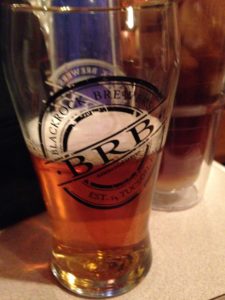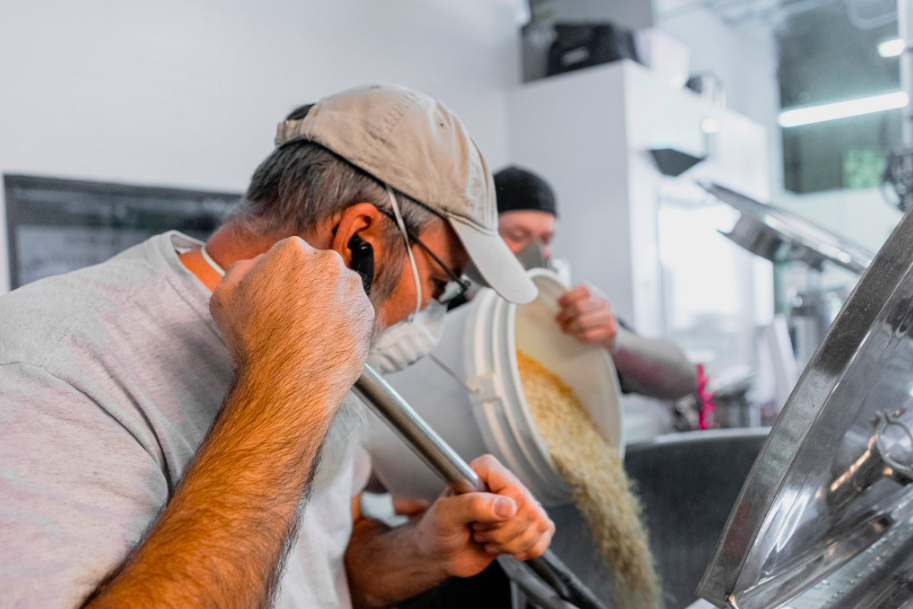Let’s Get Hoppy!
If you’re a craft beer fan, you know about hops. You know that they are one of the four ingredients in the German purity law. You know they add a bitter dimension to beer. Some of you — and you know who you are — understand that hops and hemp are just a few molecules different!
But like many things in life, there is much deeper story to hops than just a bitter finish. Obviously, as one of the four main ingredients in beer, hops are pretty important. Yet they are so often misunderstood.
Many people claim to hate hops. Those tend to be novice beer drinkers or people who hate India Pale Ales, which tend to be hoppier than most other styles. Still, hops are in ALL beers. Just because you can’t taste them doesn’t mean they are not there!
With this in mind, let’s look at some of the easy-to-understand history and characteristics of certain hop strains. Just because it’s bitter doesn’t mean it’s hoppy. And just because it’s hoppy doesn’t mean it’s an IPA!
Main Hop Types
There are basically only two types of hops when it comes to the brewing world. Without getting too scientific, they are grouped into three groups, one of which is a hybrid of the other two.
The first, known as “aroma hops” are less acidic than the others and provide that robust smell from a beer. Since 75 percent of taste is actually smell, aroma hops make themselves known before the beer is actually consumed.
The other type of hop is called “bittering hops.” Again, just as the name describes, these hops provide a bitter flavor to the bear. While there are thousands of flavors in our world, there are only five tastes that the human palate can understand. One of these is “bitterness,” which is where the acidic, “bittering hops” get their name.
The third group, called “dual-purpose hops” are the most widely used. Since these hops can provide both flavor and taste, they act as a very efficient choice when brewing.
Main Hop Flavors
There are more than 160 species of hops. In fact, there are a number that have been cross bred to blend their unique properties. Many do not even have names yet! And we were told there’d be no math here!
Here’s a great, yet simple guide to the hop flavors you’ll likely encounter at most craft beer bars. Obviously, there are many, many more, but let’s get you off on the right foot.
Cascade Hop – One of the most widely-used hop varieties by U.S. breweries, this hop variant was released for cultivation in 1972 after being naturally engineered at Oregon State University nearly two decades prior. It is dual-purpose hop that provides a little bitter taste and grapefruit and floral characteristics. Used in these beers: Light Lagers, IPAs, Porters, Pale Ales.
Centennial Hop – Relatively new to the scene, Centennial Hops have been used for nearly two decades. It is more a aroma hop and is often considered the “Super Cascade,” because it’s citrus flavor is similar, but more robust, than it’s cousin. Used in these beers: General Ales, especially IPAs.
Citra Hop – It’s description is in its name. Since being released in 2007, Citra Hops have become the most sought-after variant for “west coast” IPAs and pale ales. With their above-average bitter taste and huge citrus and tropical flavors, this hop screams California flavor. Used in these beers: West-coast IPAs and Pale Ales.
Golding Hops – For the most part, at least in the U.S., Golding Hops are the oldest of the hop family. They are most common in English beers, especially pale ales. While not very bitter, these hops do add a dramatic floral taste. Used in these beers: ESBs, Pale Ales, Belgian and English-style beers.
Mosaic Hops – These have been the most popular of the hop family in the past five years. With a robust bittering flavor, it hits the taste appreciated by hopheads. But it also adds a dynamic flavor profile, including tropical, floral, berry, and earthy flavors. Used in these beers: Browns, IPAs, Pale Ales.
Simcoe Hops – This dual-use hop is a favorite of homebrewers and craft beer brewers nationwide. It’s highly acidic taste provides a bitterness for IPAs and pale ales, but also has a wide-ranging spectrum of flavors. Given its citrusy and fruity flavor, Simcoe hops are often paired with similar hops, adding a piney and earthy flavor. Used in these beers: Mid-western IPAs, Amber Ales, Strong Ales.
Obviously, there are many more hop varieties out there. The rest are basically different deviations of the ones listed above. Some are piney and earthy, others are fruity and citrusy, while others are floral.
No matter what, it’s always good to try as much beer as possible to figure out your own preferences. Plus, it’s the most fun you’ll ever have doing “research!”
Don’t Freeze Those Glasses!
 Nothing beats coming home from a hot day, opening the fridge and grabbing a beer. But what happens next is of optimal importance. Do you pop the top off that beer and pour it into a clean pint glass? Or do you open up the freezer and pour your brew into a frozen glass?
Nothing beats coming home from a hot day, opening the fridge and grabbing a beer. But what happens next is of optimal importance. Do you pop the top off that beer and pour it into a clean pint glass? Or do you open up the freezer and pour your brew into a frozen glass?
Don’t worry, we don’t judge. But we do educate! And if you are using a frozen mug or pint glass, you may want to rethink things.
By now you have heard that some beers are best enjoyed cold — pilsners, lagers, and hefeweizens come to mind. Others are best when consumed at room temperature — stouts, porters, IPAs, etc.
But absolutely no beer should be poured into a frozen glass! Here’s some reasons:
Taste. Say you have a super robust Belgian quad, filled with dense fig and raisin notes and a subtle burnt sugar finish. Sounds delightful, right? Now, let’s dump it into a frozen glass. When you take that first sip, what is the first thing that touches your lips? That frozen glass. And what comes next? A cold Belgian quad. The temperature of the glass and the now-colder beer will dull — or numb — your taste buds, preventing all the brewer’s hard work from being appreciated. Heck, it would be better if you drank the beer through a straw. (Um, don’t drink your beer through a straw.)
Carbonation. Like most things in life, beer needs to breathe. This means it must release some of the stored carbon dioxide used in the brewing process, giving the beer its aroma and reducing the filling effect of beer when ingested. The colder the beer, the less carbonation is released. If it’s released in your stomach, you feel more full and drink less beer. For shame! So using a frozen glass promotes the storage of carbonation in the beer and reduces its aroma.
Foam. Depending on the style of beer, a frozen glass will actually produce more foam due to its freezing temperature. This means more beer going down the drain and less going into you. There are two things that cause a beer to foam up — pressure and temperature. When beer is poured into a frozen glass, it reacts with the cold temperature and the ice crystals that form on the inside. This is not a good combination if you are trying to reduce foam.
Smell. Those ice crystals on the glasses don’t just cause foam, but they also absorb odors from the refrigerator. Yeah, it’s kinda like rolling your glass in that baking soda in your fridge and then pouring some beer into it. I’m sure that works for some people, but I’d rather taste the beer and not the musky smell of a three-year-old refrigeration unit.
Like we said earlier, we’re not going to judge you if you pour your beer into a frozen glass. That’s up to you. But if we’re hanging out at your place, make sure you ask us first. We’re not interested in tasting last week’s leftovers!
